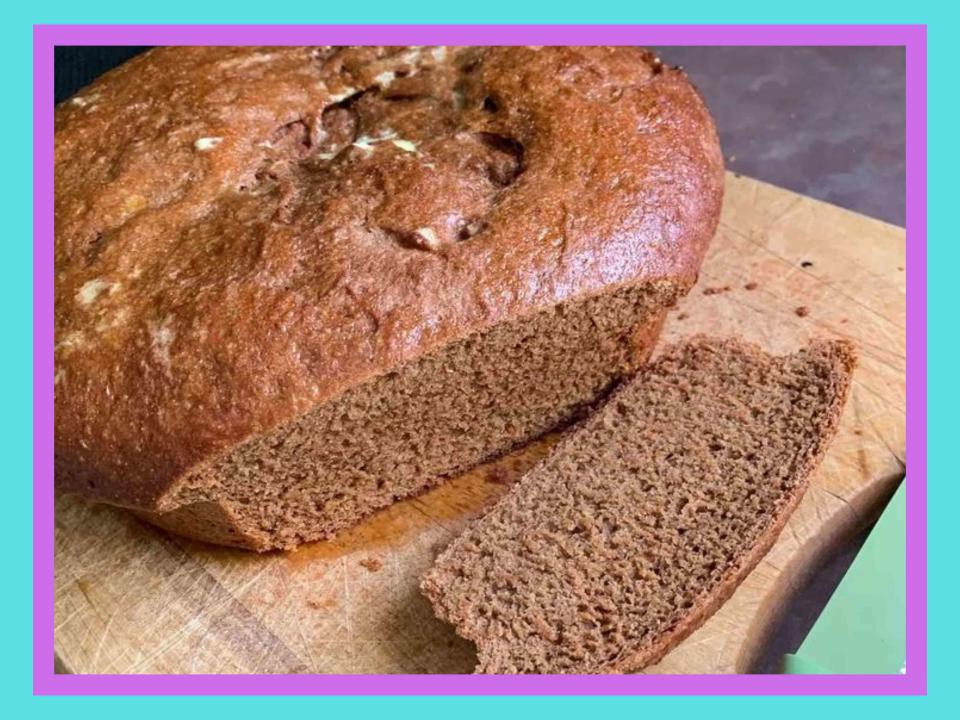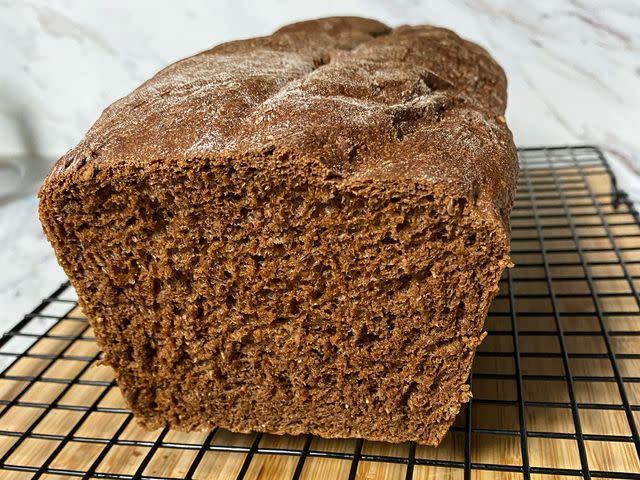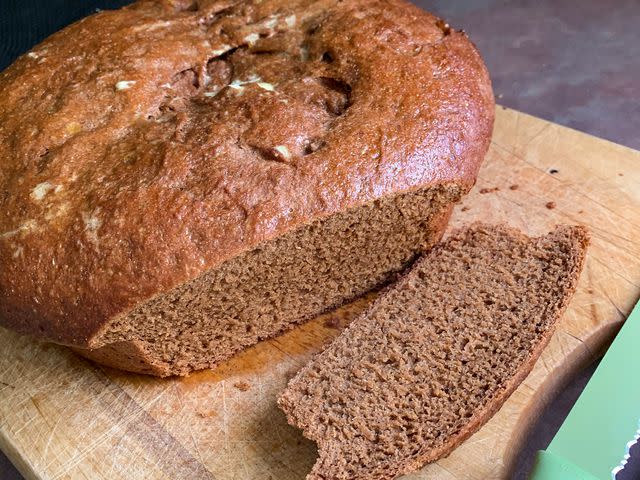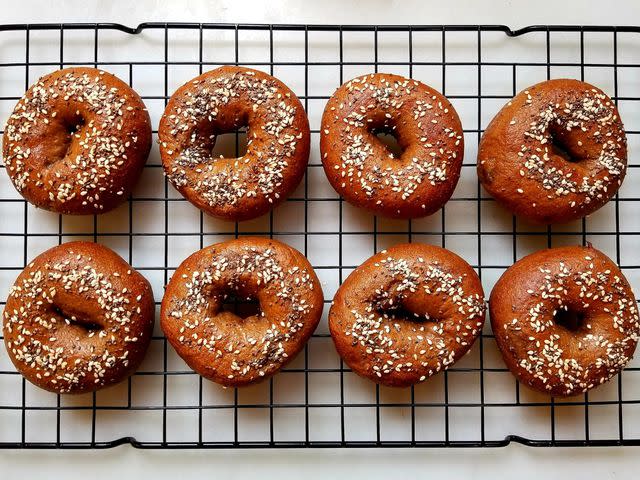What Is Pumpernickel Bread—And Where Does Its Name Come From?
Here's what you need to know.

Veronica Welch
Pumpernickel bread is known for its dark brown color and distinct earthy flavor. Centuries ago, it was made from very coarsely ground rye berries, giving it a dense and chewy texture. The recipe has evolved and taken on many shapes in different parts of the world.
When pumpernickel first became popular, it was a tough, dense bread that was best suited to sopping broth to make it edible. As it gained popularity and became more common across different cultures, it eventually became soft enough to be used as sandwich bread without breaking a tooth.
What Is Pumpernickel Bread?
Pumpernickel is still made from ground rye berries. Now, we have the technology to finely mill the rye and make it easier to digest. Since the whole grain is coarsely milled, compared to white flour, pumpernickel takes on its signature color and nutty flavor. Rye is naturally gluten-free, so like those first loaves of pumpernickel, bread made with only rye can be extremely dense and stodgy.
Nowadays, most pumpernickel bread in America includes wheat flour to add gluten and produce a soft, squishy texture. Some bakers also add malt or molasses to amplify the flavor and keep the bread a deep brown, even when white flour is present. Classic German pumpernickel is made with a sourdough starter, giving it a slight tang, while American recipes favor commercial yeast and a higher sugar content for a softer, springier loaf with a slightly sweet finish.

Where Does the Name Come From?
The name “pumpernickel” loosely translates to “fart demon.” Pumpernickel got this hilarious name from the “side effects'' of eating difficult-to-digest, unprocessed rye berries. Pumpern is a German word meaning flatulence, and nickel comes from the name "Nicholas," which, in older Germanic dialects, alludes to demons or goblins.
Some scholars say instead that it comes from a Bavarian word meaning "hard,” since the bread was quite tough. But that explanation just isn’t as fun as bread named after a farting demon.
Pumpernickel vs. Rye
Pumpernickel is a type of rye bread. Bread labeled simply as “rye bread” is made from either light or dark rye flour. Light and dark rye come from berries stripped of most or all of the bran and germ, mainly leaving the soft endosperm. Light rye has the least nutritional benefits since it is locked in the bran and germ of the berry. Pumpernickel is the coarsest grind and contains the whole grain, including the outer seed coating, giving it that dark color we associate with pumpernickel.
Is Pumpernickel Bread Healthy?
Bread made at home or from a small bakery usually has more whole ingredients and fewer additives, making it healthier than the more processed breads you’ll find prepackaged at the grocery store. Some pumpernickel sandwich bread can be loaded with sugar and corn syrup and lack the nutrition that rye flour provides. Bakeries that make pumpernickel usually don’t add additional sugar or bleached flour, preserving pumpernickel’s nutrition.

How to Store Pumpernickel Bread
Homemade loaves and loaves from bakeries will last about four to five days, wrapped tightly in parchment at room temperature. Rye flour is a natural way to help prolong the shelf life of baked goods, so the higher the percentage of rye in your loaf, the longer it will last. Just avoid storing your pumpernickel in the fridge or on top of the fridge; both spots have extreme temperatures, which will cause the bread to go stale. For soft pumpernickel sandwich bread, keep it wrapped tightly and secured with a bread tie at room temperature for about a week.
Can You Freeze Pumpernickel Bread?
Pumpernickel bread can absolutely be frozen. If you have a large loaf, cut it into slices before freezing to make defrosting easier. Sliced sandwich loaves can be frozen as-is. Tightly wrapped, most pumpernickel bread will keep for 3–4 months in the freezer.
Pumpernickel Bread Recipes

If you’re already a fan of pumpernickel or are interested in trying this hearty rye bread for the first time, the good news is that there are more recipes out there than you can count. From traditional recipes that will feel familiar if you’re a seasoned sourdough bread baker to more modern takes that are the perfect balance of fluffy and flavorful for a sandwich. Don’t know where to start? Try one of our favorite pumpernickel recipes:
Read the original article on All Recipes.

